Whilst the impacts of coronavirus are mostly negative across the board, there’s been one positive side effect, increasingly taking hold.
As a result of reduced travel and increasing business closure, pollution levels are dropping all over the world, and the environment is thriving.
As humans everywhere are forced to self-isolate due to the coronavirus pandemic, lowering pollution levels have led to the unexpected prevailing of nature.
In Wuhan, where the outbreak initially began back in December, the sky which is usually home to dangerous air pollution levels, has turned blue. The change has been attributed to travel bans and the pause of factory work.

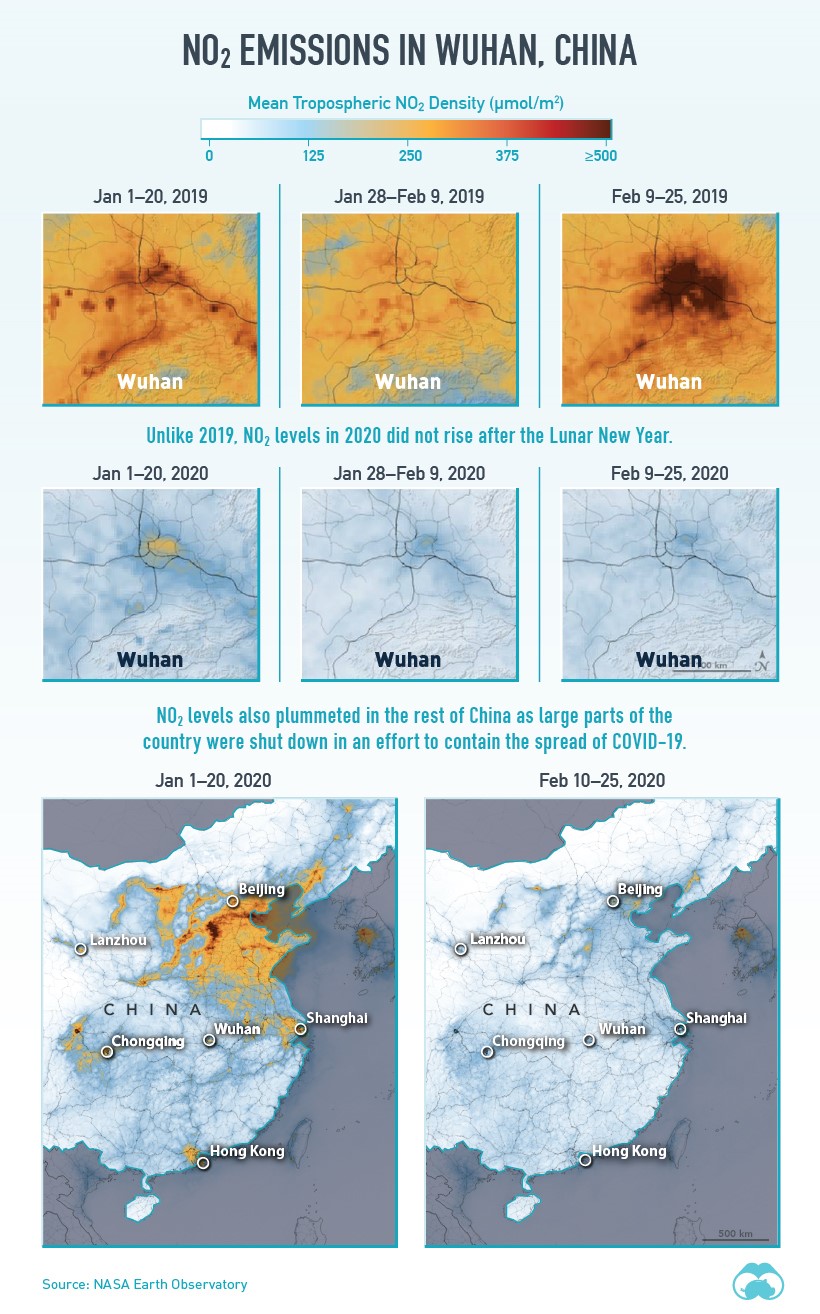
Elsewhere in Nothern Europe, data from the European Space Agency (ESA) has demonstrated a distinct drop in the air pollutant nitrogen dioxide between the months of January and March, when coronavirus first took hold.
Here, satellite data shows nitrogen dioxide levels across Italy and the rest of Europe in early January:
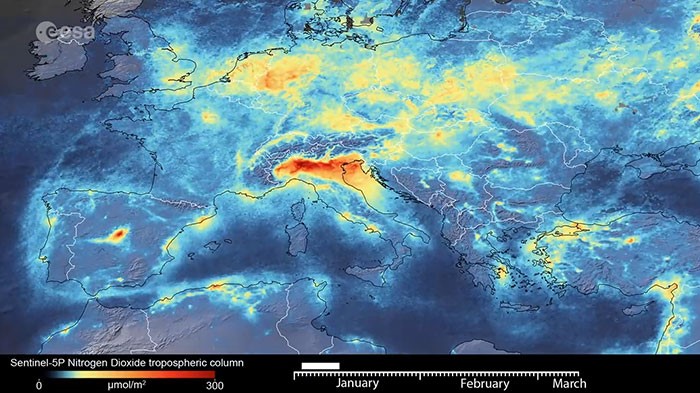
European Space Agency (ESA) satellite data from January.
And here, data shows distinctly decreased levels over the same areas in early March:
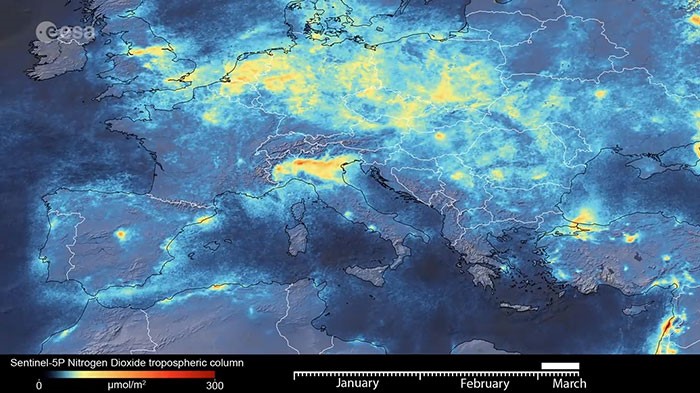
In Venice, following the reduction of water traffic from boats and cruise ships, residents are noticing that the usually murky waters are becoming crystal clear. Even more incredibly, dolphins have begun to swim in the canals, joined by schools of fish and even swans.

Another user described: “Nature is reclaiming its spaces.”
With aviation grinding to a halt and millions of people working from home, a range of emissions across many countries are likely following the same downward path.
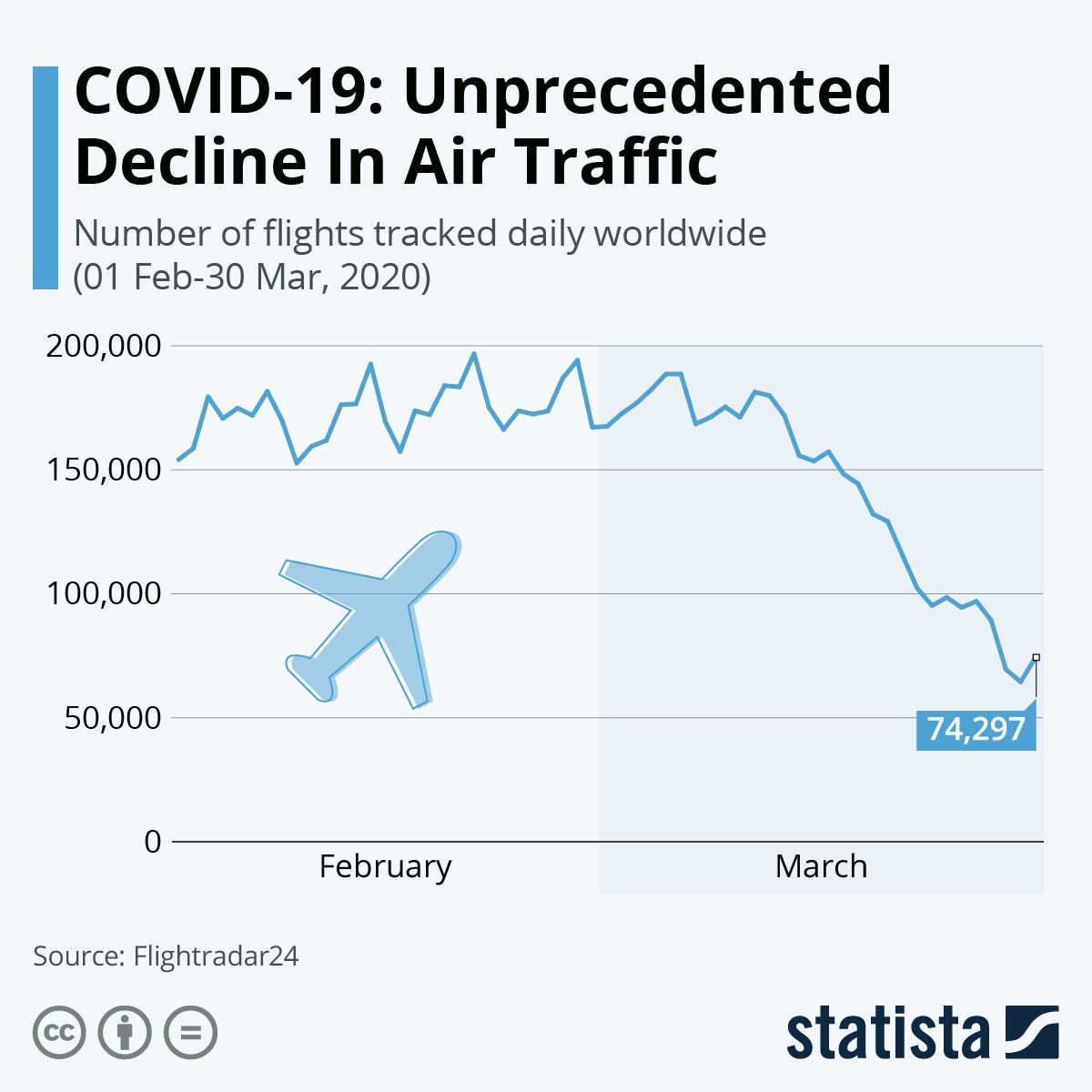
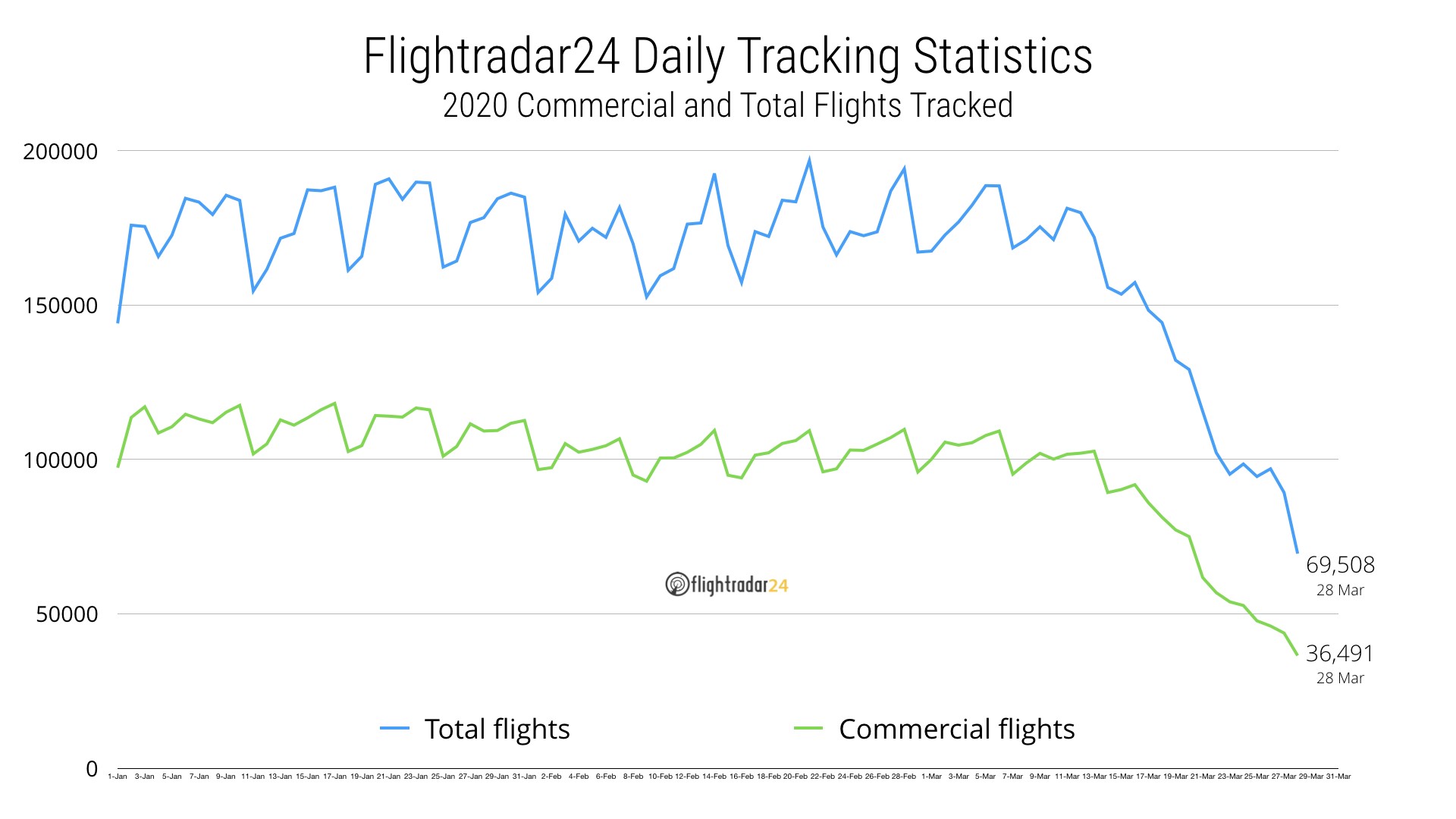
Infographic: COVID-19 causes unprecedented decline in air traffic
Global air traffic
From 7 March at 15:00 UTC with 15,012 flights in the air to 7 April with just 5,275.
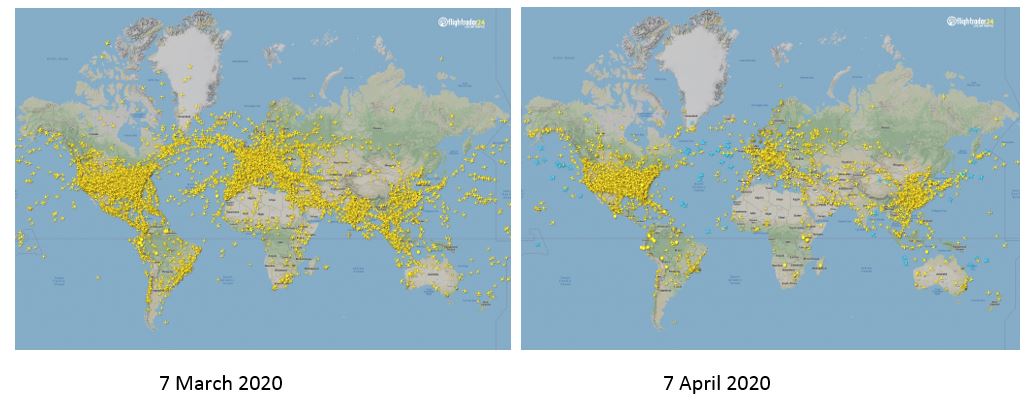
Europe
European skies have quieted considerably. The difference between the March and April images below is a decrease of 2,400 flights

East Asia
We compare flights in East Asia below between 7 January and 7 April as flights in China and surrounding countries saw declines first in the third week in January. Traffic at the businest airports in China is still down about 60% from normal levels.

North America
Flights in North America have declined considerably, but a substantial number remain, especially in the United States. The image from 18:00 UTC on 7 March shows 8,400 flights, while the 7 April displays just 2,950 flights.

Global traffic will likely continue to fall throughout April as airlines further reduce their flying schedules, especially in places like the United States where airlines are beginning an additional round of cuts this week
While people working from home will likely increase the use of home heating and electricity, the curbing of commuting and the general slowdown in economies will likely have an impact on overall emissions.
It’s incredible to see how in such a short time, nature can adapt to the changing of human habits. Hopefully, this is something the world can remember once the pandemic is over, and apply to the ways we think about environmental policy moving forward.
Sources: https://www.flightradar24.com/blog/charting-the-decline-in-air-traffic-caused-by-covid-19/, https://happymag.tv/how-coronavirus-is-unexpectedly-benefiting-the-environment/
